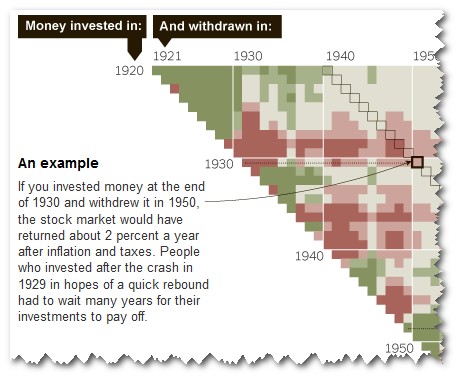(Originally sent February 2009)
For those that are new or may have forgotten, ‘Things’ is intended to be weekly, I’ve just been abnormally busy recently. I’m getting this one done by adding bits in stages throughout the week, but since it has somehow become much longer than usual it has actually taken more than a week for these incremental efforts to add up…
Movies
The movie Push was much better than I had expected, being unusually well thought-out and executed for the genre.
My review:
I’m currently undecided on which I want to see of these two films:
The Unborn – implementing all ‘best practice’ horror cliches
(IMDb 4.8/10! Rotten Tomatoes 13%!)
Franklyn – Possibly ‘Bridge to Terabithia’ for adults, but less mature
(IMDb 7.8/10 Rotten Tomatoes N/A)
(Don’t forget you can switch off YouTube annotations via the icon in the bottom right)
[Much later I did eventually see Franklyn. Unfortunately I don’t recommend it. – T.M. 20/2/11]
Video
‘Big Dog’: Once again, technology jumps forward a bit faster than I was expecting, this time in robotic quadrapedal locomotion:
Link
I found this New Yorker article on the marketing of movies absolutely fascinating.
Warning – long article! Recommend consumption in chunks!
Excerpts:
“Publicity is selling what you have: the film’s stars and sometimes its director. Marketing, very often, is selling what you don’t have; it’s the art of the tease.”
“Even as movie attendance has dropped nineteen per cent from its peak of 1.6 billion theatregoers, in 2002, the number of films released each year since then has increased by thirty per cent. A dozen new films—three of them big studio releases—now vie for attention on any given weekend. To cut through the ambient noise, major studios spend an average of thirty-six million dollars to market one of their films.”
(Note that the average is probably the wrong figure to consider – a handful of gargantuan budgets will massively distort it. I would guess the median figure might be around 10 million dollars based on similar power-law distributions)
“the industry-standard multiplier for ultimate box-office—two and a half times the opening weekend’s gross”
Quote
Nat Torkington of O’Reilly Radar, on the trend for applications and data to be run and stored in the ‘cloud’ (the external network, e.g. Google Docs or webmail) rather than your own computer:
“Data in the cloud can be a privacy problem, because you’ve outsourced your privacy, so you’re vulnerable to attack not just from hackers but also from governments, competitors, and incompetence.”
Taken from a very important but annoyingly presented talk you can click through (yes, talk you can click through, that’s why it’s annoying) here:
http://radar.oreilly.com/2008/11/web-meets-world-privacy-and-th.html
Puzzle – previous
Last time I asked what people thought digital cinema projection combined with mobile phone interaction might cause to happen. Here’s some of what came out…
Storytelling used to be interactive with the storyteller flexing the way the story is told depending on audience reaction – this sort of thing becomes possible again. The mood could be flexed (perhaps with the soundtrack – dynamically generating suitable music is something already being used in video games), lines changed, or even the ending. But where does the input come from?
Live ‘what happens next’ competitions with prizes for audience members (!) and for scriptwriters…
Crowd-source optimisation of the presentation – up/down volume, focus, alignment. (I heard some cinemas in the US already do this – a few chairs in the auditorium are equipped for the audience member to give instant feedback on these issues, or it may have just been a single button that means ‘something is wrong’)
Product placement: can be localised (different product appears in same film when shown in different countries, or different locations in those countries), or placed on the screen in real time using some kind of eye-tracking, and optimised using mood-measurement, and cinema temperature control!!
Personally I suspect it will go through a process of hype (a few gimmicky movies where you can choose the ending, a rush of adverts with some kind of audience interaction tacked on), it will rely on sponsorship from a mobile operator (probably Orange), and it may ultimately fail because Cinema is a ‘sit back’ medium, rather than a ‘sit forward’ inherently interactive one like the web. (TV is a ‘sit back’ medium, which is why nobody presses ‘the red button’).
Or maybe I’m wrong – apparently the statistics actually show that 11 million people press that button every week, and a ‘killer app’ that we haven’t thought of could always emerge in interactive cinema and transform the entire medium.
Puzzle – this week
This just in – Facebook are taking what I consider to be an incredibly significant step in that they are now approaching their terms of service in a way similar to the US Constitution:
http://blog.facebook.com/blog.php?post=56566967130
Their proposals for a ‘statement of rights and responsibilities‘ and ‘Facebook Principles‘ are currently up for debate.
There are three parts which I think work very interestingly together:
Principle 1. Freedom to Share and Connect
People should have the freedom to share whatever information they want, in any medium and any format, and have the right to connect online with anyone – any person, organization or service – as long as they both consent to the connection.
Digital technology has blurred the line between ‘information’ and ‘content’. As such, the very first principle sounds as if it endorses p2p file sharing…
R&R 2.3 For content that is covered by intellectual property rights (like photos and videos), you specifically give us the following permission, subject to your privacy and application settings: you grant us a non-exclusive, transferable, sub-licensable, royalty-free, worldwide license to use, copy, publicly perform or display, distribute, modify, translate, and create derivative works of (“use”) any content you post on or in connection with Facebook. This license ends when you delete your content or your account.
Facebook need your permission to share your content with those you want to share it with, certainly, but imagining them modifying and then publicly performing it sounds a bit strange (I’m imagining a personal photo being photoshopped in some bizarre way and then paraded around Tokyo on a sandwich board with a strange slogan in order to promote Facebook) – and the idea that they will then stop such a thing as soon as you ‘delete your content’ is also hard to imagine…
R&R 5.1 You will not post content or take any action on Facebook that infringes someone else’s rights or otherwise violates the law.
Does this contradict Principle 1? Does that matter?
A picture
After an unusually intense edition of Things, here’s a nice little story and picture from the surprisingly entertaining Cake Wrecks blog.




